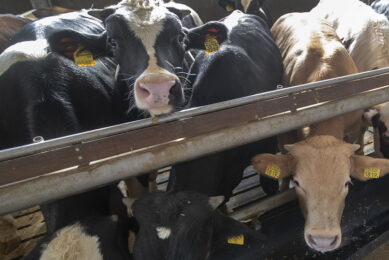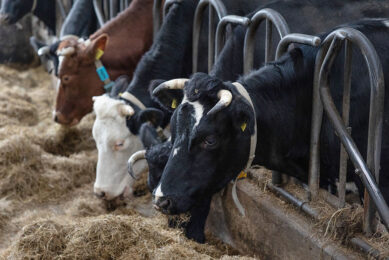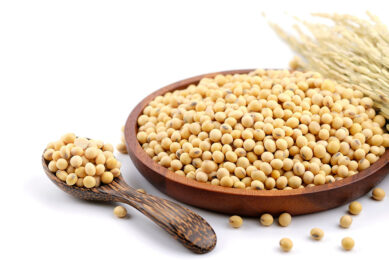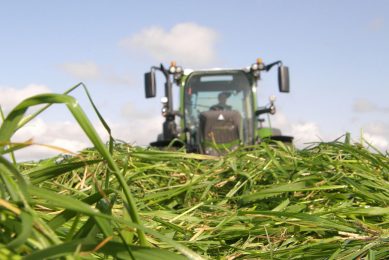Roasted soybeans increase CLA in milk
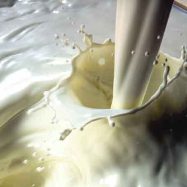
Feeding 4 kg/day of raw or roasted soybeans to dairy cows increased the proportions of unsaturated fatty acids in milk compared to the control treatment without soybeans.
However, feeding roasted soybeans doubled the conjugated linoleic acid (CLA) content in milk compared to the control. Feeding raw
soybeans has little or no effect on the CLA content of milk fat because
polyunsaturated fatty acids (C18:1, C18:2 and C18:3) in the whole soybeans are
relatively unavailable to the rumen microbes for bio-hydrogenation.
When
raw soybeans, however, are processed by grinding, roasting, micronizing,
flaking, or extruding, these processed soybeans effectively increase the CLA
content in milk.
This data was provided to delegates at the 22nd
Annual Southwest Nutrition and Management Conference held in Tempe,
Arizona in a paper by T. R. Dhiman and A. L. Ure from Utah State University on
“Feeding Strategies to Improve Nutritional Quality of Dairy and
Beef.”
Soybean oil increased CLA
Feeding soybean oil at 2% or
4% of the dietary dry matter to dairy cows increased the proportions of CLA in
milk compared to the control.
Increasing the soybean oil level in the
diet to 4% reduced the milk fat content and resulted in lower CLA
yield/day.
Under similar feeding conditions, oils rich in linoleic acid
were more effective in enhancing CLA and C18:1 trans-11 vaccenic acid (VA) in milk fat than oils containing linolenic acid.
The
effects of mixing linoleic and linolenic acids (50:50) on enhancing VA and CLA
were additive, but not greater than when fed separately. CLA/VA-enriched dairy
products are believed to have potential health benefits for consumers in terms
of protection from both cancer and atherosclerosis.
Ideal
milk
The authors say that the “ideal” milk fat for human health has been
defined as <10% polyunsaturated fatty acids, <8% saturated fatty acids and
>82% monounsaturated fatty acids.
Producing milk on the farm with an
“ideal” fat profile may be unrealistic, however, because milk with high levels
of unsaturated fatty acids will be prone to oxidation, negatively affecting
manufacturing characteristics.
Nonetheless, it is possible to increase
the proportions of mono- and polyunsaturated fatty acids in milk through dietary
manipulations and management practices on the farm.
The proportions of
different fatty acids in milk will vary with the animal’s diet, amount and
composition of dietary fat, genetics, stage of lactation, and season.




